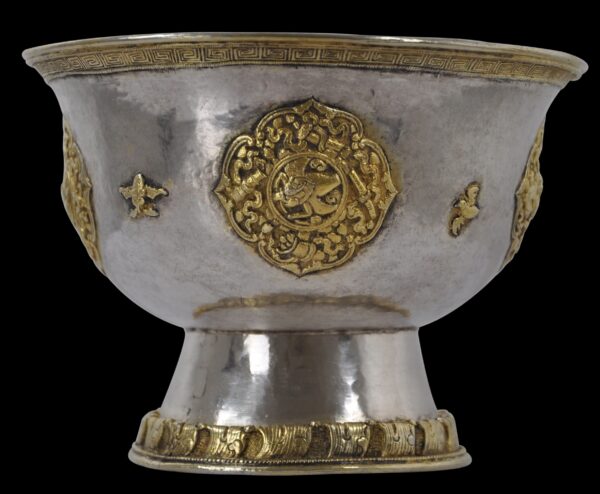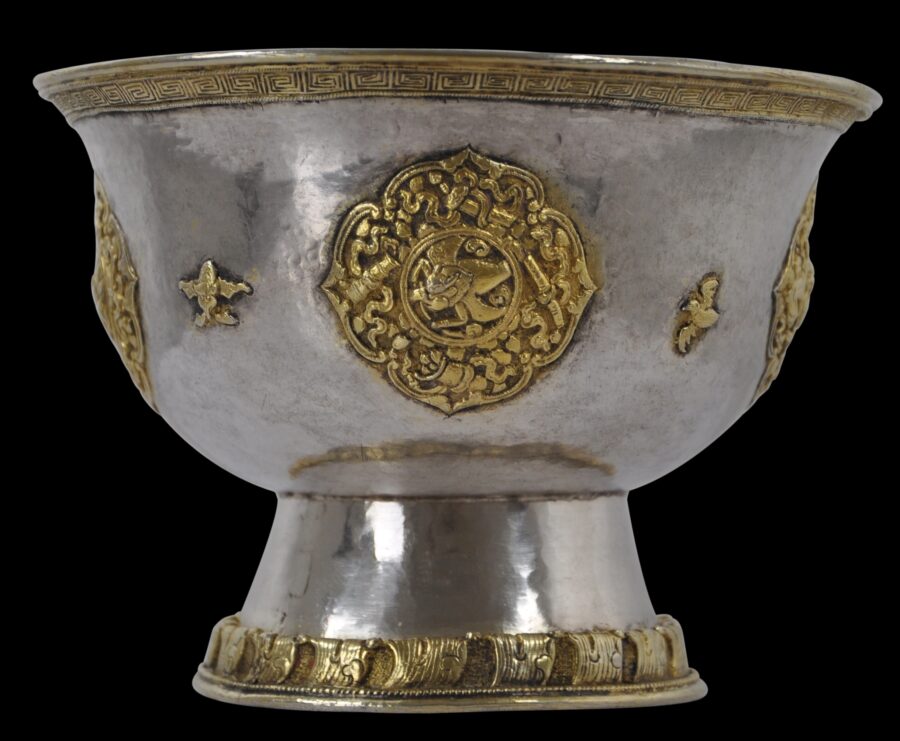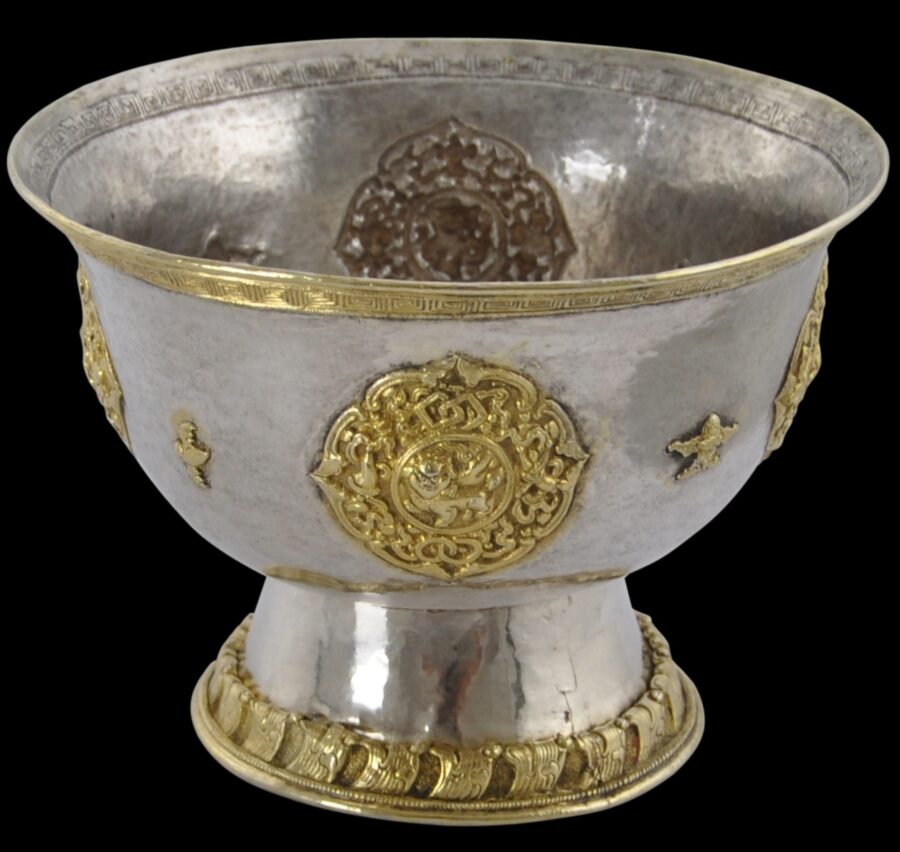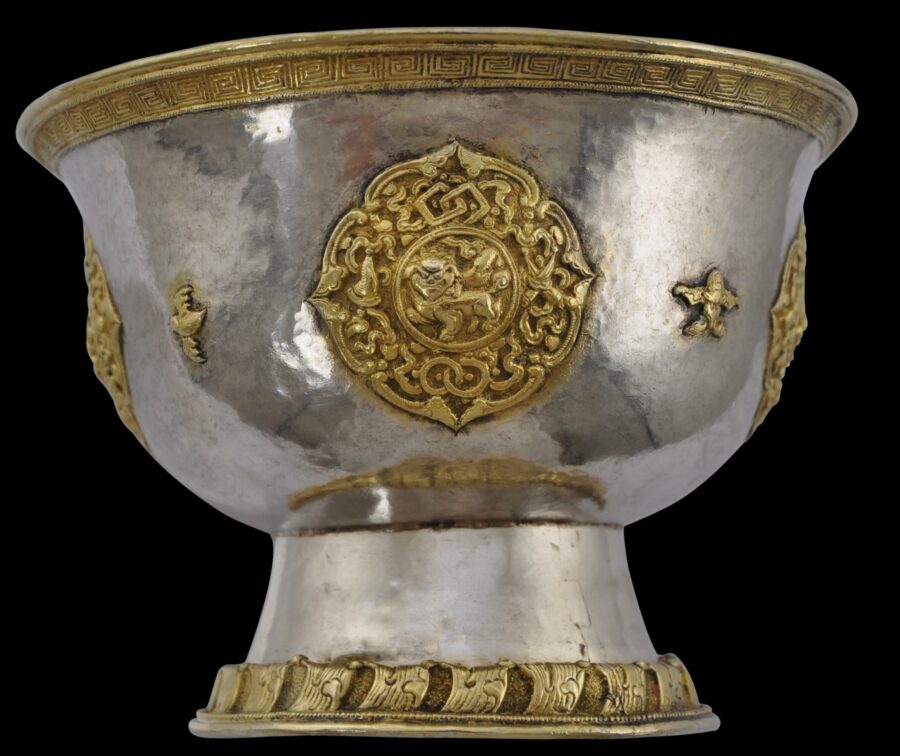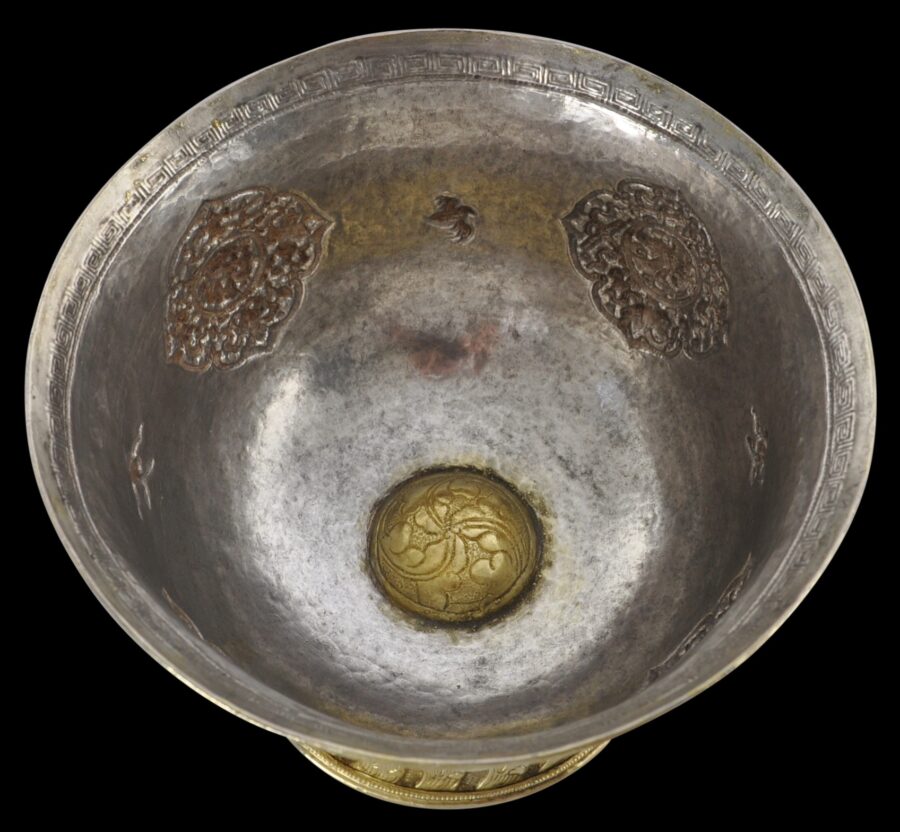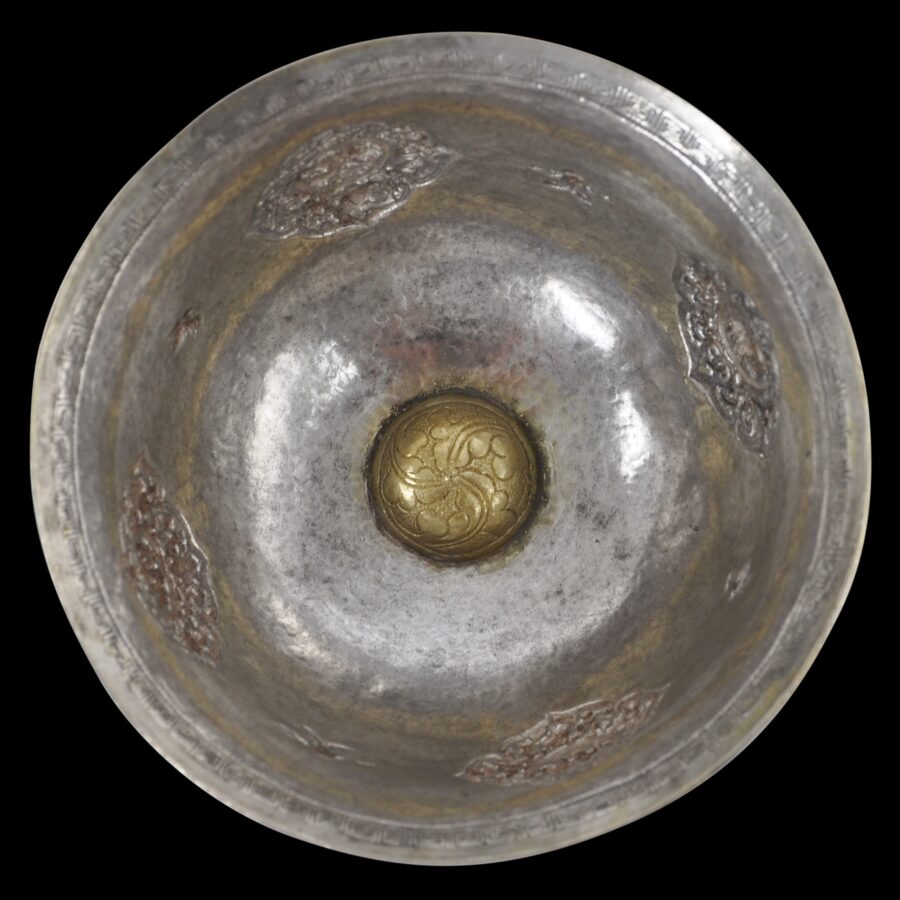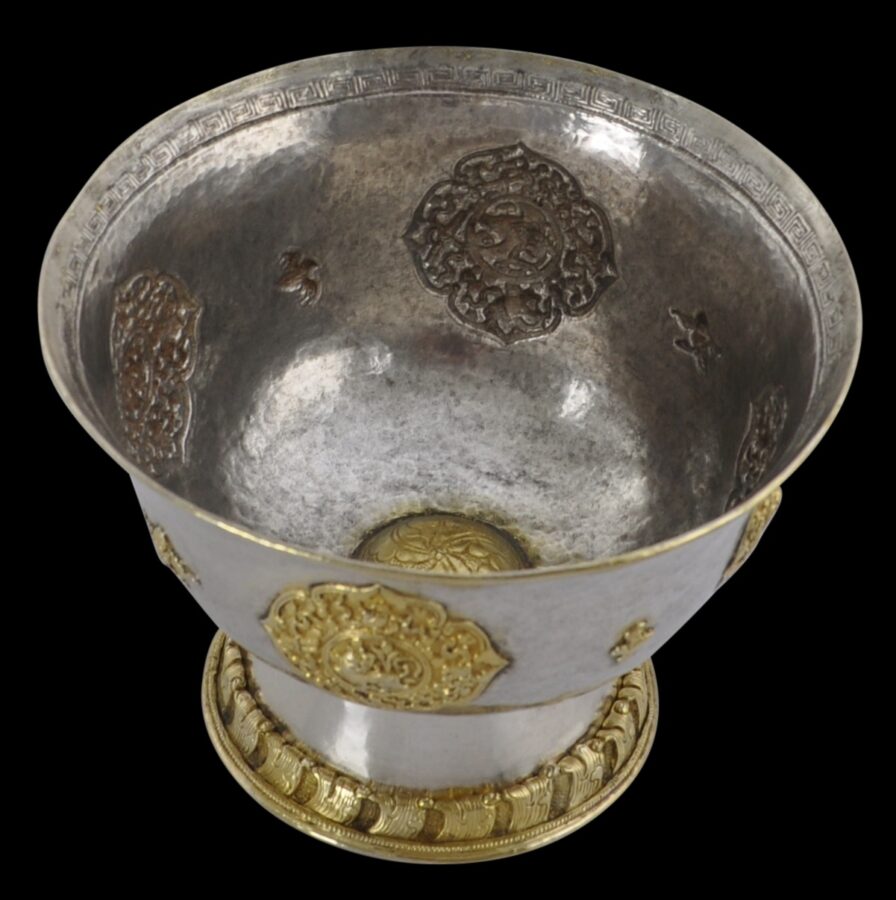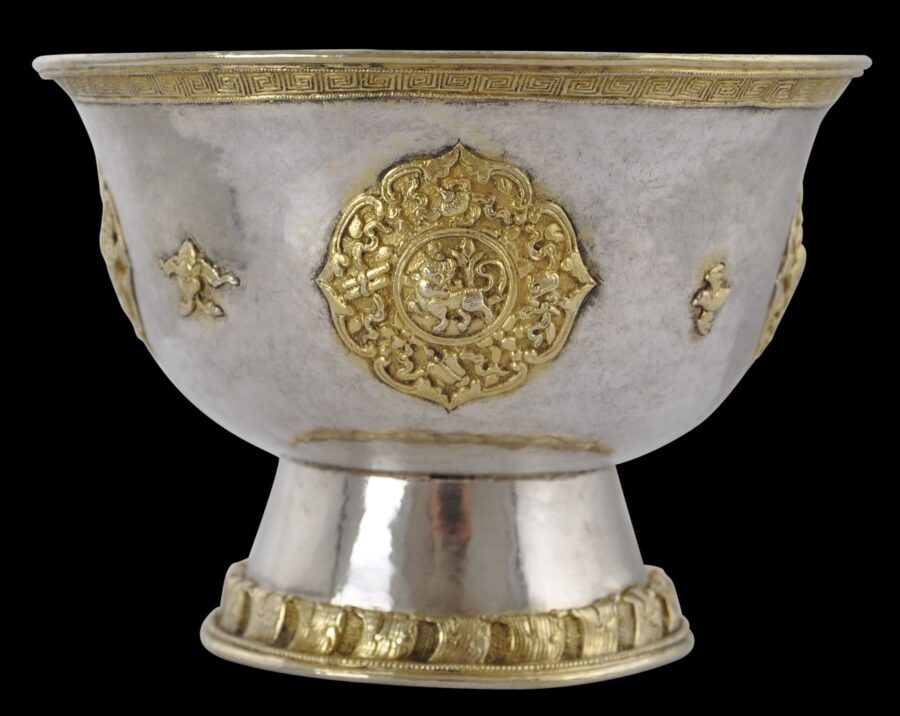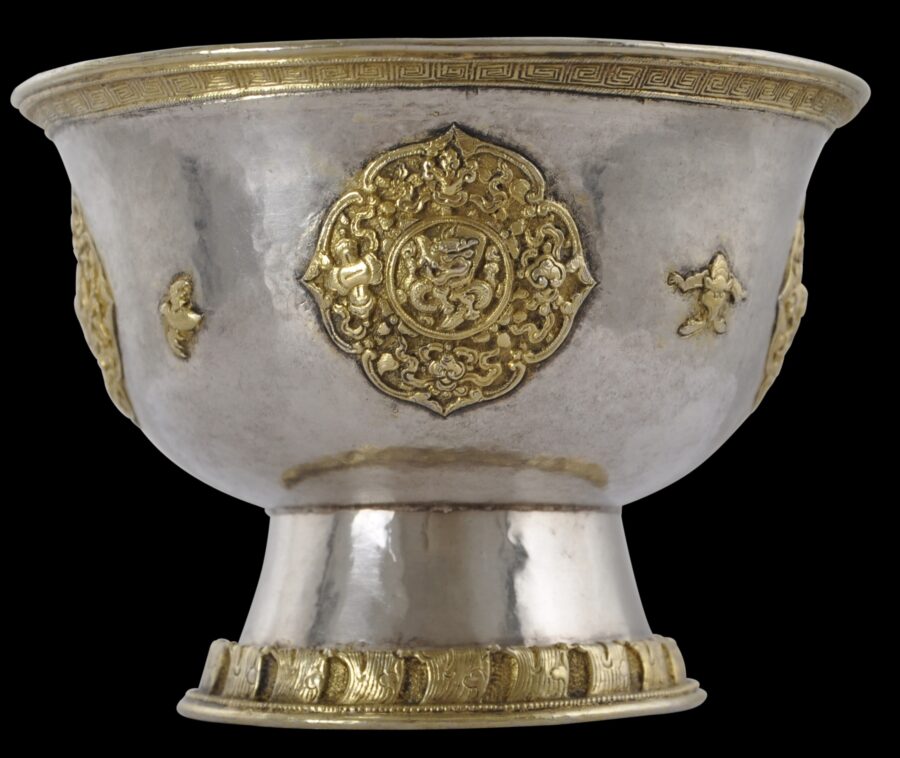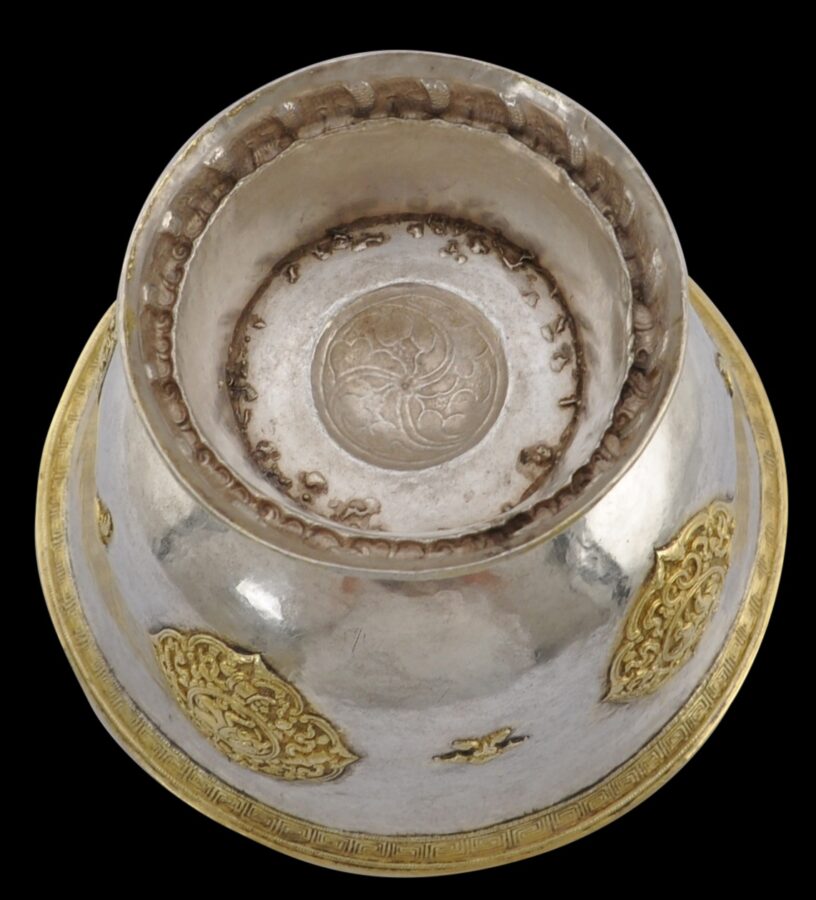This beautiful silver footed bowl with parcel-gilt highlights most probably was used as a large wine cup at wedding banquets and other celebratory feasts. Wine would have been poured from a ewer into such a bowl. It is much larger than the usual drinking bowl or cup that might be used every day – befitting its use at an aristocratic banquet. A related example in the Potala Palace Museum is illustrated in Shanghai Museum (2001, p. 181).
The bowl is of hammered silver. The sides have been repoussed and chased with raised and gilded quatrefoil cartouches with central mythical creatures such as a quilin and a dragon, surrounded by Taoist symbols. These are separated by fields of plain silver other than small bat and bird motifs.
There is a key-fret border engraved just below the rim of the mouth of the bowl.
The lower rim of the foot is repoussed in high relief with a lotus petal border that has been gilded.
The base of the interior is decorated with a raised roundel that has been gilded and decorated with a flower motif.
The foot has been soldered to the base using a particularly early or primitive soldering technique whereby granules of solid solder are distributed along the point where the two surfaces to be joined meet, and then the object as a whole is heated. As long as the solder has a melting point below that of the object to be soldered then the solder will melt to joint the two surfaces together. Modern techniques require a blow torch which is used to directly apply heat to the solder so that it will melt. The early form of soldering is evident in this piece here by the lumpiness of the solder on the underside of the foot and also it’s somewhat haphazard nature.
The lamp is without assay or maker’s marks. Probably it was made by a Chinese silversmith either in Tibet or mindful of Tibet aesthetics, although the motifs essentially are Chinese.
The bowl is in excellent condition and clearly has significant age.
References
Reynolds, V. et al, From the Sacred Realm: Treasures of Tibetan Art from the Newark Museum, Prestel, 1999.
Shanghai Museum, Treasures from Snow Mountains: Gems of Tibetan Cultural Relics, Shanghai Museum, 2001.


